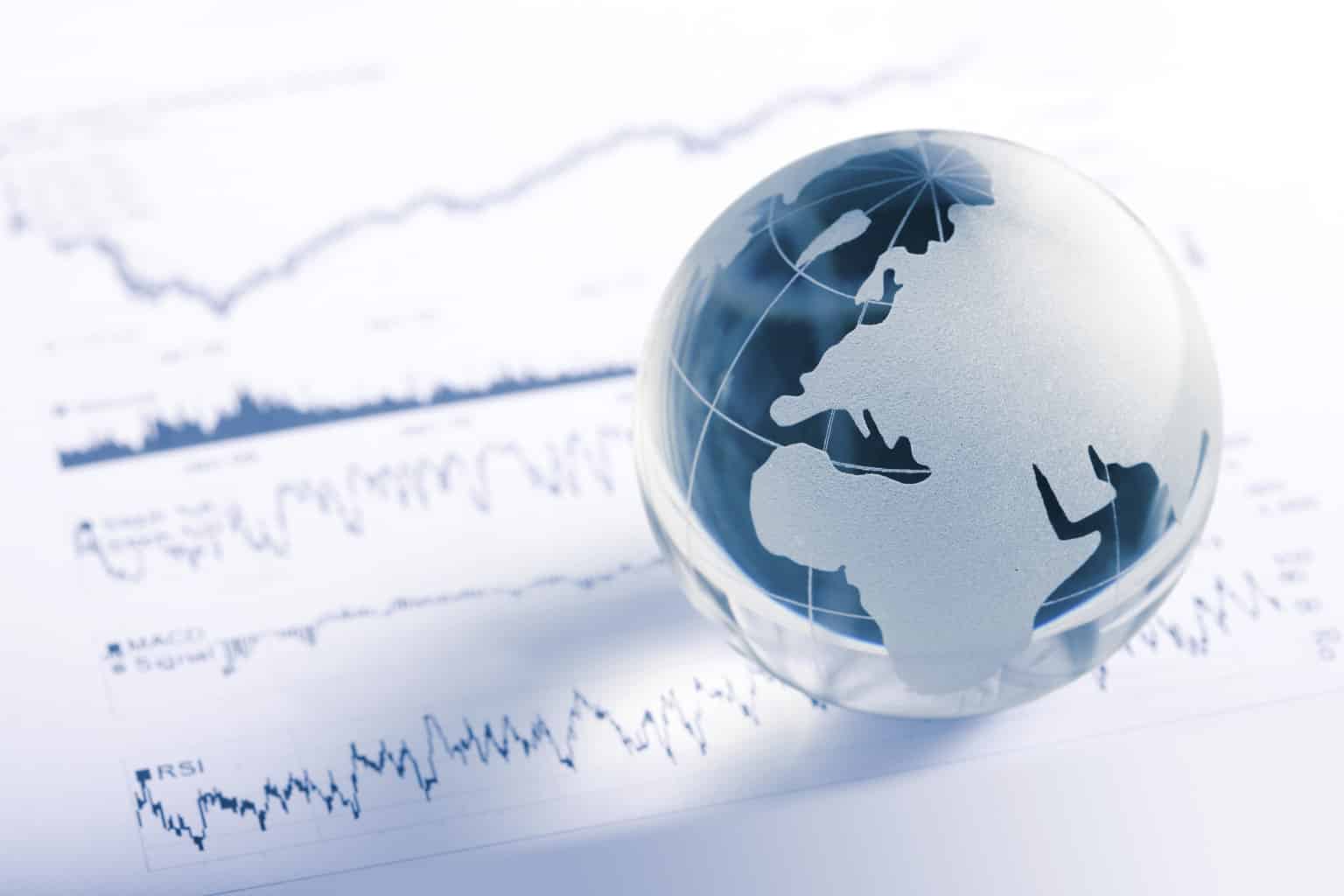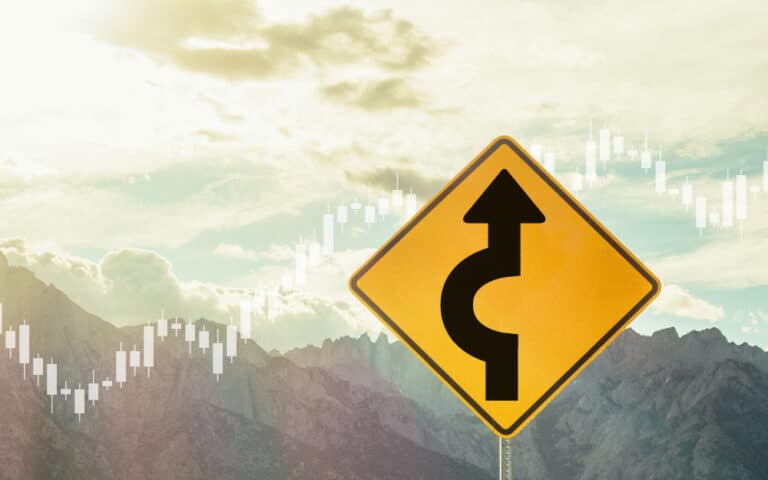Financial year 2020 has truly been a year of two halves. The first half was characterised by continued economic expansion, buoyant equity markets and historically low – even negative in some countries – interest rates. However, before midnight’s chimes heralded a new decade, raging bushfires made it clear that Australia was potentially set for a calamitous start to 2020.
The final quarters of the ‘teens’ decade took equity markets to new highs and there were numerous examples of over the top company valuations, pushed further by a significant swing toward passive investing over the past decade.
There were many uncertainties which raised a number of questions as the year came to a close. How high could markets go? When would central banks call time on record low interest rates? How would the tit-for-tat trade skirmish between the US and China playout? Could the economic expansion continue and if not, what would be the catalyst for a recession?
That last question was answered early in 2020 by news trickling out from China about a new coronavirus afflicting the residents of Wuhan.
Australians were more focused on the serious bushfire situation, with more than 46 million acres of burnt bushland/rural communities. Fortunately, in the months that followed, Australia took swift and collective action to respond to the threat of COVID-19. As a result, Australia has fared much better than some other developed nations. Australia has just officially entered its first recession in 30 years, ending the world’s longest period of economic expansion for our nation. It wasn’t the first to experience economic contraction and other economies will follow. Whether the global experience is a V-shaped or U-shaped recovery (or a mix of the two) is dependent on a range of factors.
Firstly, there are limited precedents in recent history for a recession caused by an exogenous shock that originated outside the world of finance. Measures that have worked in the past may not work this time. Regardless, global monetary and fiscal policy has been unleashed; the success of these programs will affect recovery. Despite prevailing low rates, of the largest 43 central banks in the world, 60% reduced interest rates. Aggressive measures to suppress the spread of COVID-19 have partially shut down economies and required huge fiscal stimulus measures to support the growing number of unemployed citizens and shuttered businesses.
Recovery is also dependent on how well each economy is able to bounce back. Experience suggests that consumer sentiment is likely to be fragile on the path back to normality. Some businesses may not recover, and some job losses won’t be temporary. We must also consider the economic damage, which is likely to be long- lasting in some sectors. For Australia, China has long been an important part of our economic success. The current war of words about COVID-19’s origins and subsequent actions by China may also impact our economic recovery in the months ahead if the situation continues to escalate.
The challenges the year has brought to the investment environment are many. However, history has taught one valuable lesson – where there is adversity, there is also opportunity, an adage particularly relevant in the investment world.
There will always be winners and losers. Picking and choosing which assets to own in the current environment – be they stocks, bonds or other investments – involves judgement. This year’s challenges have provided a wealth of such opportunity. We have been able to top up core holdings, to invest in new but previously overvalued stocks, as well as sell down others that fared surprisingly well in this unusual environment.
Our investment teams make judgements based on views formed using all available information; information that is changing daily. While we don’t expect to get everything right, we believe that keeping an open mind, using solid logic and sticking to our investment principles, will always put us in good stead. At Perpetual we are committed to our fiduciary heritage and our philosophy of growing and protecting your wealth. We have been earning the trust of our clients for more than 130 years and pride ourselves on our long-standing client relationships.
Thank you for your continued investment. Our investment teams continue to deliver investment solutions that meet the changing needs of our investors, without losing sight of the values that underpin our success.
Australian Equities
Markets had their most tumultuous year since the Global Financial Crisis. The financial year started well with the S&P/ASX 300 index reaching new all-time highs in July 2019 before the bull market advanced it to a new record peak of 7,115 on 20 February 2020. Markets had been buoyed for a long time by extraordinarily low rates, quantitative easing and expansionary fiscal policy emanating from the United States where economic growth had recorded its longest ever expansion. Then, in a stunning turnaround, markets collapsed in a heap starting 21 February as the slow drip-feed of negative news regarding the spread of coronavirus suddenly turned into a torrent of fear once investors realised that the rapidly spreading pandemic would culminate in devastating economic shutdowns.
Australian equities fell nearly -37% from their peak to 23 March in one of the fastest crashes in history. Much like the early stages of the Global Financial Crisis, expensive defensives and growth stocks in sectors like healthcare and consumer staples held up relatively well whilst economically sensitive value sectors like resources and banks were hit hard. Energy stocks, caught in a pincer between the pandemic and a Russian / OPEC oil price war, fell to the lowest levels in around 15 years. As the economy shut down to stop the spread of the pandemic the Federal Government and Reserve Bank of Australia implemented enormous fiscal and monetary support packages to preserve economic structures through a period of “hibernation”. Measures by the US Federal Reserve appear to have had a positive impact, preventing a complete meltdown in global credit markets.
As the period of extreme panic faded and infection rates came under control, markets rallied through April, May and June on the hopes of a V shaped recovery, although the exact pathway to growth remains unclear. Whilst the markets finished the year in negative territory, long suffering value investors saw a substantial rally in beaten down stocks as the year came to a close, including energy, REITs, banks and consumer discretionary. We continue to maintain portfolios of quality companies at reasonable prices, despite some short term challenges, which have always delivered for our clients in the long run.
By Paul Skamvougeras – Head of Equities
Credit and Fixed Income
The 2020 financial year started with record low interest rates, reflective of market conditions and a less positive macroeconomic outlook. Although cautious optimism emerged in the first quarter of 2020 due to an expectation of improved global growth supporting fixed income markets, it ended with the proverbial bang, as the COVID-19 pandemic created a financial as well as a health crisis across the globe. In developed markets, governments have responded to bond and credit market turmoil by implementing a range of fiscal measures. In most countries, central banks have largely used up the monetary armoury available to them; record low rates leaves little room for monetary policy to stimulate the environment. Despite this, in the US the Federal Reserve has implemented over US$1 trillion in quantitative easing and has implemented programs to buy a huge range of investment grade securities, estimated to expand the Fed’s balance sheet by approximately US$4 trillion. The European Central Bank (ECB) has committed to expanding its balance sheet by over US$1 trillion. In terms of fiscal stimulus, the US has committed approximately US$2.2 trillion to help businesses and individuals, as its unemployment rate hit 14.7% in April 2020, the highest rate since the great depression. In Europe, fiscal stimulus via loan guarantees has been announced. The primary economic risk remains a slower recovery than markets appear to be anticipating.
The pandemic and ensuing financial crisis have significantly impacted the credit outlook, as well as liquidity across a range of securities. Despite some improvement in recent weeks we remain cautious as indicators are largely negative. Facing a deep and lengthy recession, the growth outlook is challenged; whilst at the same time, a raft of credit rating downgrades across investment grade and high yield international credit also detract from the growth outlook. This will make security selection and portfolio positioning crucial looking ahead. More recently the team has been able to find attractive opportunities in credit markets for our investors , by actively seeking out and buying attractively priced securities. Much of the recent support has created some excellent relative value opportunities as corporate debt still offers attractive spreads relative to other fixed income securities.
By Michael Korber – Head of Credit and Fixed Income
Multi Asset
The first half of the financial year was characterised by low interest rates, low unemployment, a buoyant corporate debt market and rising equity valuations. In the background, concerns were growing that the global economic expansion was potentially slowing. The global economy and financial markets were then thrown into turmoil by the COVID-19 pandemic. Populations were locked down, borders closed, and businesses shuttered. The resultant increase in unemployment has seen governments embark on what’s been described as a ‘once in a century’ fiscal stimulus expansion. With interest rates already at low levels before the crisis (and negative cash rates in some countries), fiscal policy has become the ‘go to’ tool. Governments provided a variety of support measures, such as providing payments to the growing numbers of unemployed and supporting impacted businesses. These policies were designed to keep the “pilot light on” so that there was an economy to restart after a period of hiatus. However, if unemployment remains high because consumer and business confidence remains subdued, even more government support may be required. The recent rally in risk assets is an area of concern for us. Given the co-ordinated and scale of policy maker support, we expected markets to bounce, but the speed and strength of the rebound has been surprising.
At the time of writing, in some markets there is a significant disconnect between valuations and underlying company fundamentals. If the economic and earnings recovery disappoints it may lead to another period of volatility in financial markets. In practical terms, low interest rates continue to be a problem for retirees. Retirees are faced with a difficult choice – accept low rates on cash or fixed income investments or accept higher volatility (and the potential for greater losses) in the hope of generating higher returns. This challenge is exacerbated in the current environment as other income streams, such as dividends and rental income, are also drying up. As the economic cycle matured, we focussed on removing (or reducing) our clients’ exposure to asset classes which were most vulnerable to an economic slowdown. We had positioned our portfolios conservatively prior to the pandemic emerging and as a result, we were able to protect investors’ capital well over this period. The recent strong rebound in markets has allowed us to replenish some of our portfolio defences. Looking ahead we remain confident that through active asset allocation and prudent risk management we will continue to help clients safely navigate the volatile times ahead and capitalise on opportunities as they arise.
By Michael O’Dea – Head of Multi Asset
Global Equities
Worldwide equity markets had their most tumultuous year since the Global Financial Crisis. Shares had been buoyed for a long time by extraordinarily low interest rates, quantitative easing and expansionary fiscal policy emanating from the United States where economic growth had recorded its longest ever expansion. US equities continued a long stretch of outperformance whilst the UK, Europe, China and Japan dealt with economic growth challenges, partly due to Brexit and the Sino-American trade war.
Reports of a pandemic in China first circulated in January. At first markets took these in their stride but in a stunning turnaround, markets collapsed in a heap starting 21 February as the slow drip-feed of negative news regarding the spread of coronavirus suddenly turned into a torrent of fear once investors realised that the rapidly spreading pandemic would culminate in devastating economic shutdowns. The US S&P500 fell nearly -1,149 points or -34% to 2,237 on 23 March. Markets in Europe and the UK fell even harder. The VIX exceeded 82, higher than even the worst of the GFC. Economic data, including Purchasing Manager Indices from China, showed the largest declines ever recorded as one economy after another shut down to stop the spread of the pandemic. Massive fiscal programs of around 10% of GDP were announced to prevent a complete collapse. Quick action by the US Federal Reserve, which expanded its balance sheet by trillions, prevented a meltdown in global credit markets.
Many growth stocks like tech, which had already performed so well for years got a renewed boost as shutdowns pushed even more economic activity online. Economically value sectors got crushed including energy which saw the oil price fall to the lowest levels in around 15 years. The Market finished the year in positive territory, and value investors saw a substantial rally. We continue to take opportunity as it arises, to accumulate quality companies trading at attractive valuations, companies with the balance sheet strength to ride out the crisis.
By Garry Laurence – Global Equities Portfolio Manager
Source: Perpetual Investments





































































